Geomagnetic storm sounds inspire new album
24 February, 2023
A new album inspired by the sounds of radio waves produced by a geomagnetic storm has been released. St Swithin’s Day Storm is a collaboration with Steven Anderson, known as …
Using a Very Low Frequency receiver at Halley Research Station we can pick up radio waves made by our planet. We use these waves to investigate the science of space weather storms, to help understand potential space weather impacts on the climate system, and for lightning detection. We can also directly convert them into audible sounds and are exploiting these amazing natural ‘sounds of space’ in a number of collaborations. Scroll down to listen to the eerie noises of physics and find out more about the collaborations.
Our planet naturally produces a variety of radio emissions. These radio waves are generated by lightning activity or geomagnetic storms driven by the Sun, and are at the lower end of the radio spectrum, between 100 Hz and 10 kHz. They are best detected by large antennae, in space or on the ground. British Antarctic Survey detects these radio transmissions at its Antarctic Research Station, Halley, on the Brunt Ice Shelf, which lies beneath the Earth’s converging geomagnetic field lines.
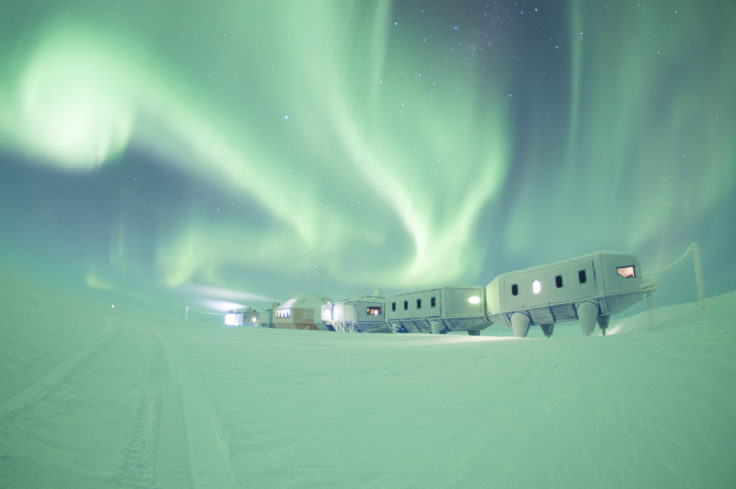
Sound waves are vibrations of air molecules, but these emissions – although they are within the frequency range of the human ear – are a form of electromagnetic radiation (oscillating electric and magnetic fields) which cannot be heard directly. The recorded emissions can be directly converted to waveform audio files using suitable software. This is what enables us to hear the ‘sounds of space’.
Spherics: A ground-based Very Low Frequency receiver, such as the one at Halley, can detect signals from lightning activity. Each lightning flash emits a short radio pulse, known as a spheric, which covers a wide range of frequencies. These are heard as short cracks and appear as vertical lines in a spectrogram. Most of the spherics that are detected at Halley come from lightning activity over the Amazon and Congo basins, both over 8,000 km away!
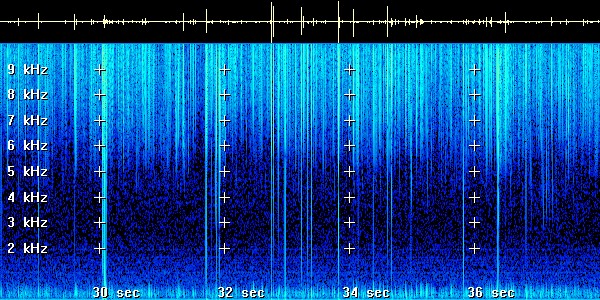
Whistlers: Some of the radio waves from lightning strikes leave the atmosphere and leak into space, before being guided by the Earth’s magnetic field and received in the opposite hemisphere. Higher frequency waves travel faster than lower frequency waves, so whistlers have a characteristic descending tone.
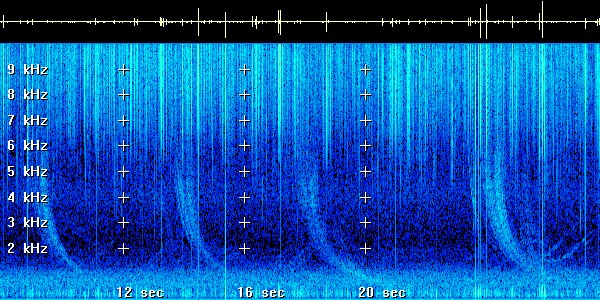
Chorus: Unlike whistlers, chorus emissions are generated deep within the magnetosphere itself. Energetic electrons enter the magnetosphere during geomagnetic storms driven by the Sun, causing the Earth’s beautiful aurora and generating chorus emissions.
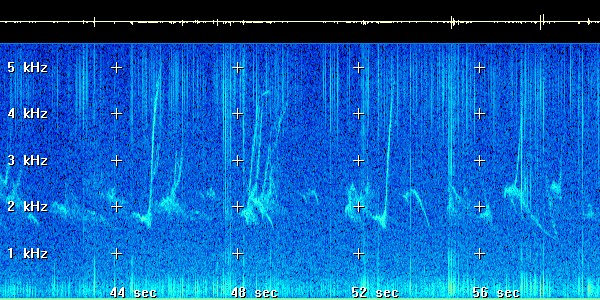
Nigel Meredith has been working with artist-engineer Diana Scarborough to find novel ways of visualising space weather data. The ‘sounds of space’ formed the starting point of this exciting venture and inspired Diana to create soundscapes by combining the mesmerising sounds with original visual sequences. We have since engaged with leading Australian composer Kim Cunio and professional dancers Becky Byers and Felix Denton to develop the works into a multidisciplinary show. Our first show, which included a scientific presentation followed by a performance with animation, contemporary dance and soundscapes, was performed at the Cambridge Science Festival in March 2018. Following on from the success of this event, Kim Cunio travelled from Australia to play live in our second show at the BAS Aurora Innovation Centre in November 2018.
Watch the ‘Sounds of Space’ Live broadcast (from Friday 16th November, 2-3pm)
In October 2019 a new immersive performance of the ‘sounds of space’ was showcased at the Cambridge Festival of Ideas. This show included vibrant, experimental, contemporary dance, in which the dancers moved through the audience and space as they responded to the sound-led, data-driven journey from Antarctica to beyond the galaxy. The dynamic performance was followed by a serene meditative experience, led by Diana Scarborough, featuring ‘sounds’ from the VLF receiver at Halley, images of Antarctica and the beautiful piano music of Kim Cunio.
Highlights from the ‘Sounds of Space’ at the Cambridge Festival of Ideas. Filmed by Eileen Haring-Woods and Becky Byers and edited by Diana Scarborough
In June 2024, we presented new interpretations of the ‘sounds of space’ during four exciting shows on The Laboratory Stage at Glastonbury. Kim Cunio gave presentations on the ‘sounds’ of space, followed by performances by Kim Cunio and Heather Lee accompanied by visual sequences from Diana Scarborough.
We have also given talks on the ‘sounds of space’ and our art-science collaborations at the Polar Educators International Conference in Cambridge in April 2019, at the Bluedot Festival, Jodrell Bank Observatory in July 2019, at the Cambridge University Astronomical Society in March 2020 and February 2022, at the Ecoart TECH zoom webinar in November 2020, during the Aerobility Armchair Aurora livestream in March 2021, the 44th COSPAR Scientific Assembly in July 2022, the Cambridge launch event of Our Place in Space in July 2022 and at the Aerobility Aurora 23 reception in February 2023.
Visit our twin site to find out more about our project from the artist’s perspective.
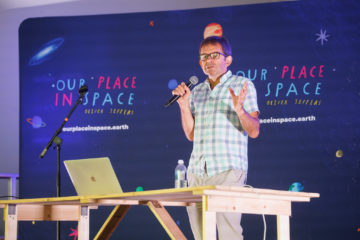
The ‘sounds of space’ from Halley have been incorporated into the exploration gameplay in Elite Dangerous. In this unique collaboration Nigel Meredith worked with Frontier Developments, the creators of Elite Dangerous, to incorporate the eerie sounds into the new gameplay. In any one of over 400 billion stellar systems, players can now use a new analysis mode to discover more about their surroundings. The new mode, called the Full Spectrum System Scanner, features the simulated sounds of radio emissions from exoplanets in remote stellar systems based on the Halley VLF recordings. The update, entitled Elite Dangerous: Beyond – Chapter 4, was released on 11th December 2018.
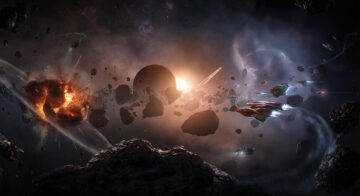
Elite Dangerous is a space-flight simulation video game in which players take control of their own starship and can fight, explore and travel throughout a realistic three-dimensional model of the Milky Way galaxy. Elite Dangerous, launched in 2014, is the fourth game in the Elite video game series and, as of 15th January 2019, cumulative sales of Elite Dangerous had exceeded 4.3 million franchise units.
Nine one-minute short films, based on the animations, music and ‘sounds’ from our show, were shown as part of a film installation at the world famous Venice Biennale in 2019. The installation, which was screened from 8th May to 4th June at the historic Palazzo Pesaro Papafava, is part of ‘Alive in the Universe’, an art-film project that explores our emotional explanation of the universe through arts and ideas.
‘Antarctic Ice’, one of our short art-films screened at the Venice Biennale
Aurora Musicalis is a sonic experiment, combining the ‘sounds’ from the VLF receiver at Halley with original music. The new work, released on 6th May 2020, allows us to hear the ‘sounds of space’ accompanied by Kim Cunio’s original music played on a grand piano. The complete 90 minute work comprises 11 tracks revealing the diurnal variations of the audio frequency signals, collected from Halley in one day with piano music also put together in one day. The album, available for free on bandcamp, also includes a 3-minute compilation, sonic highlights from the 24 hour period, set to the music of the opening track and the highlights on their own so that you can create your own musical or visual response to the raw Halley ‘sounds’.
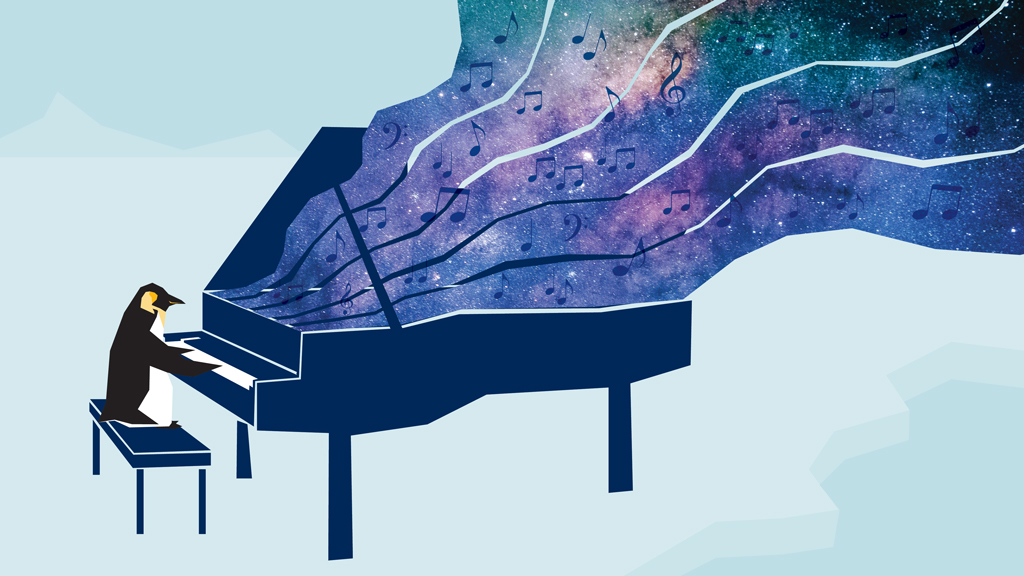
The album includes a music video by Diana Scarborough featuring the 3 minute compilation accompanied by some beautiful Antarctic imagery from the BAS image collection. This video recently made waves in the art world, being the first exhibit in ecoconsciousness, an online art catalogue by ecoartspace.
Aurora Musicalis. Music video
“The benefits of the music are multiple, they reduce stress and pain, improve concentration, rest at night, among many others.” Fahrenheit Magazine.
Since its release music from Aurora Musicalis has featured on a number of radio shows, including Sunday Night Chill Out on Manx FM, the Fogcast on Resonance FM, the Space Station and the Independents Only Ambient Special on Skylab Radio, Clubglobal on Cambridge 105 Radio and The Magic Window on Mad Wasp Radio. Furthermore, tracks from the album have been included on two ambient playlists, “Ambient Autumn – Orbit III” and “Ambient Music for Ambient People: 10 Change“.
Celestial Incantations, launched on 21st June 2021, builds on our previous album by introducing a whole new “spectrum” of space ‘sounds’ and a huge musical palette, including orchestral instruments, traditional instruments and electronics. The album, which is free to hear and download from bandcamp, takes the listener on a journey from Earth to the largest definitions of cosmic time and space. It invites us to consider the vastness of space, imagining time and space in the grandest sense, and embark on a spectacular journey of sound. Starting off at Earth and moving outwards you will hear compositions inspired by and featuring the ‘sounds’ of our planet, Mars, a comet, Jupiter, Saturn, interstellar space and a galactic pulsar. The album concludes with a track featuring the ‘sound’ of the merger of two black holes, as evidenced by the first observed gravitational wave, an almost unbelievable ripple in space time that Einstein doubted humans could ever capture!
Celestial Incantations. Music Video
Music from Celestial Incantations has appeared on the Phantom Circuit (#329 & #331) on Beachy Head Radio, Audionautic Radio (ep. 17 & ep. 20), Space is the Place Radio Show on Cando FM, The Magic Window on Mad Wasp Radio, Muzak Concrete on Noods Radio, The Dark Train (C19#70, C19#71 MA#14 & MA15) on Warminster Community Radio, the Institute of Spectra-Sonic Sound (4.16.22) on KEPW 97.3 FM, the Spacemusic podcast, Night Tracks on BBC Radio 3 and Cambridge Arts Roundup on Cambridge 105 FM, and four ambient compilations: Ambient Spring – Orbit IV, Ambient Autumn – Orbit IV, Ambient Winter – Orbit V and Ambient Music for Ambient People: 22 Home.
As part of the Unboxed: Creativity in the UKproject Our Place in Space, Celestial Incantations featured in a silent disco skygazing event on Midsummer Common in Cambridge on 13th August 2022, during the peak of the Perseid meteor shower and in a silent disco at St Luke’s bombed out church in Liverpool on 21st October 2022, during the Orionid meteor shower.
Sunconscious, released on 1stDecember 2022, features music inspired by the Sun. Like our previous albums, this work is a fusion of art and science and a type of dreaming of how art and science can tell the great stories of our time. The album begins with an awakening on Earth with a track featuring the ‘sounds’ of space as recorded by the Halley VLF receiver on the day of the first sunrise following the long austral winter. We then move out into interplanetary space and encounter tracks inspired by and including the ‘sounds’ of plasma waves in the solar wind as captured by the Fields Experiment on the Parker Solar Probe. In amongst this intriguing mix we include tracks featuring the Sun’s natural vibrations as detected by the SOHO Michelson Doppler Imager and a type III solar radio burst recorded by the Radio Wave and Plasma Science instrument on the Cassini spacecraft. The album ends back on Earth at Halley VI, with recordings from the VLF receiver on the day of the last sunset before the long austral winter.
Sunconscious. Music Video
The album, which is free to hear and download from bandcamp, includes 4 minute compilations of the music and space ‘sounds’ and the space ‘sounds’ on their own, so that you can create your own musical or visual response to the raw ‘sounds’ of the Sun. The first track from the album, “First Light”, also features on a compilation album, IP_DT_Vol.1, by Kate Bosworth to be released by Irregular Patterns on 27 January 2023. Music from Sunconscious has appeared on the Dark Train (MA#29, MA#32, MA#33, MA#37, MA#51 and MA84) on Warminster Community Radio, the Phantom Circuit (#370 and #374) on Beachy Head Radio, the Institute of Spectra-Sonic Sound (10:29.22) on KEPW 97.3 FM, and Variant 13 (#23) on Radio Buena Vida, the Fogcast on Resonance FM and two playlists: Neptune’s Selector: Swimming in Space and Ambient Autumn – Orbit V.
In In Aurora’s Garden, released on 14thDecember 2023, we experience the solar storm of 17th June 2012. A few days prior to this, on the 13th and 14th June, two large explosions on the surface of the Sun released bursts of charged particles and magnetic field which travelled outwards and towards the Earth. The material reached the Earth on the 17th June, the day chosen for our album, tearing open the Earth’s magnetic field, leading to a geomagnetic storm. Particles were injected into near Earth space giving rise to radio emissions including chorus and plasmaspheric hiss. At lower altitudes electrons rained down on the Earth’s upper atmosphere leading to some beautiful and stunning displays of the aurora. We hear the crackles and pops of lightning spherics, the descending tones of whistlers, the rising and falling tones of chorus and the steady hum of plasmaspheric hiss. The musical response is wide and varied and includes gongs, wood blocks, bells, vibraphones, glockenspiels, the piano, a synthesis rig, the Japanese shakuhachi and the tabla. We also hear soprano Heather Lee, in Kim Cunio’s setting of a traditional Chinese text, as well as a new version of the Joni Mitchell classic Both Sides Now. Artwork produced by multimedia artist Diana Scarborough, inspired by Antarctica, the space weather data and the music, adds a rich visual element to the album.
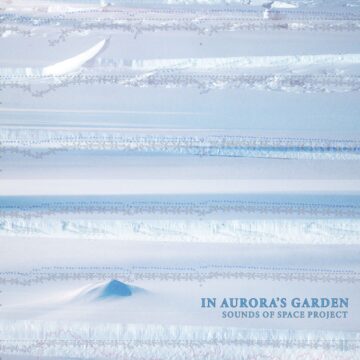
Music from In Aurora’s Garden has appeared on the Dark Train (MA#94, MA#96 and MA#99) on Warminster Community Radio, the Institute of Spectra-Sonic Sound (1.6.24) on KEPW 97.3 FM, the Phantom Circuit (#409) on Beachy Head Radio and Mixed Feelings (#58) on Skylab Radio.
In The Seventh Continent, pre-released on 12th June 2024, we take you on a journey with the British Antarctic Survey’s 2023 Antarctic mission to experience the wonders of Antarctica through sound, music, and image.The work is inspired by audio recordings taken by Kat Turner, from the Polar Oceans team, during her recent visit to Antarctica on board the RRS Sir David Attenborough for the BIOPOLE project.
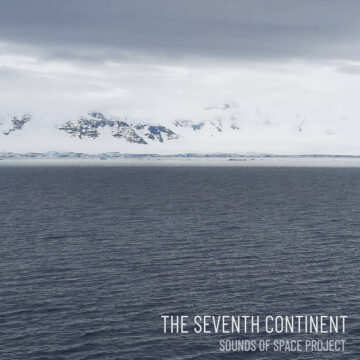
In the album, we experience the wonders of our seventh continent through recorded sounds of sea-ice crushing, charismatic seals, and falling snow among others, put to music and image. The album was pre-released on bandcamp on 12th June to coincide with a special preview of the album following a talk given by Kim Cunio during his recent residency at BAS.
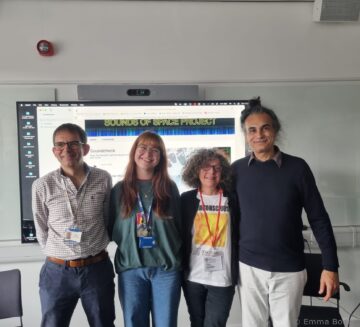
Music from The Seventh Continent has appeared on the Dark Train (DDIX B.10101) on Warminster Community Radio and The Space Station (#006) on Skylab Radio.
In a separate project Nigel Meredith collaborated with the art group Troika, resulting in the inclusion of the ‘sounds of space’ in a new artwork. The work, entitled Terminal Beach, is a computer animation film featuring a robotic arm, dressed in long black hair, chopping down what is very probably the last tree on Earth with a haunting soundscape featuring recordings from the Halley VLF receiver. This work was displayed at the Real Feelings Group Exhibition at the House of Electronic Arts, Basel from 27th August to 15th November 2020, at the Real Feelings: Emotion and Technology Exhibition at the Mu Hybrid Art House in Eindhoven from 11th June to 12th September 2021 and as part of a solo exhibition entitled “No Sound of Water” at the Arte Abierto in Mexico City from 12th November 2021 to 15th May 2022. The work is currently on display at the beautiful MAK Museum in Vienna and will be shown at the Langen Foundation in Dusseldorf in September.
No Sound of Water (2022) at the Arte Abierto in Mexico City, featuring Terminal Beach
In another exciting development, the crackles and pops of lightning spherics recorded by the Halley VLF receiver, can now be heard in a new release by Letters from Mouse. The track, entitled “Confused By The Simple”, forms part of a bonus album which accompanied the release of An garradh on Subexotic Records on 16th April, 2021.
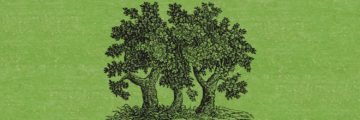
The ‘sounds of space’ recorded during a geomagnetic storm appear on an exciting new album by Letters from Mouse featuring Dr Nigel Meredith. In this album, Steven Anderson, aka Letters From Mouse, takes us on a journey through the various stages of the storm, using raw and processed space ‘sounds’ from the Halley VLF receiver. The processed sounds form the bedrock of the album and were created by running the VLF recordings as samples into his modular system, resulting in some weird and wonderful electronic music. The music is accompanied by a voiceover by Nigel Meredith explaining the space ‘sounds’, and, more generally, space weather and its potential impacts on the performance of technology in orbit and on Earth. The storm itself, which peaked on St Swithin’s Day (15thJuly) in 2012, was accompanied by some sustained and enhanced chorus emissions and the gradual acceleration of electrons to relativistic energies at geostationary orbit, potentially increasing the risk to communications satellites operating in this region. The album, St Swithin’s Day Storm, was released by Subexotic Records on 24th February, 2023.
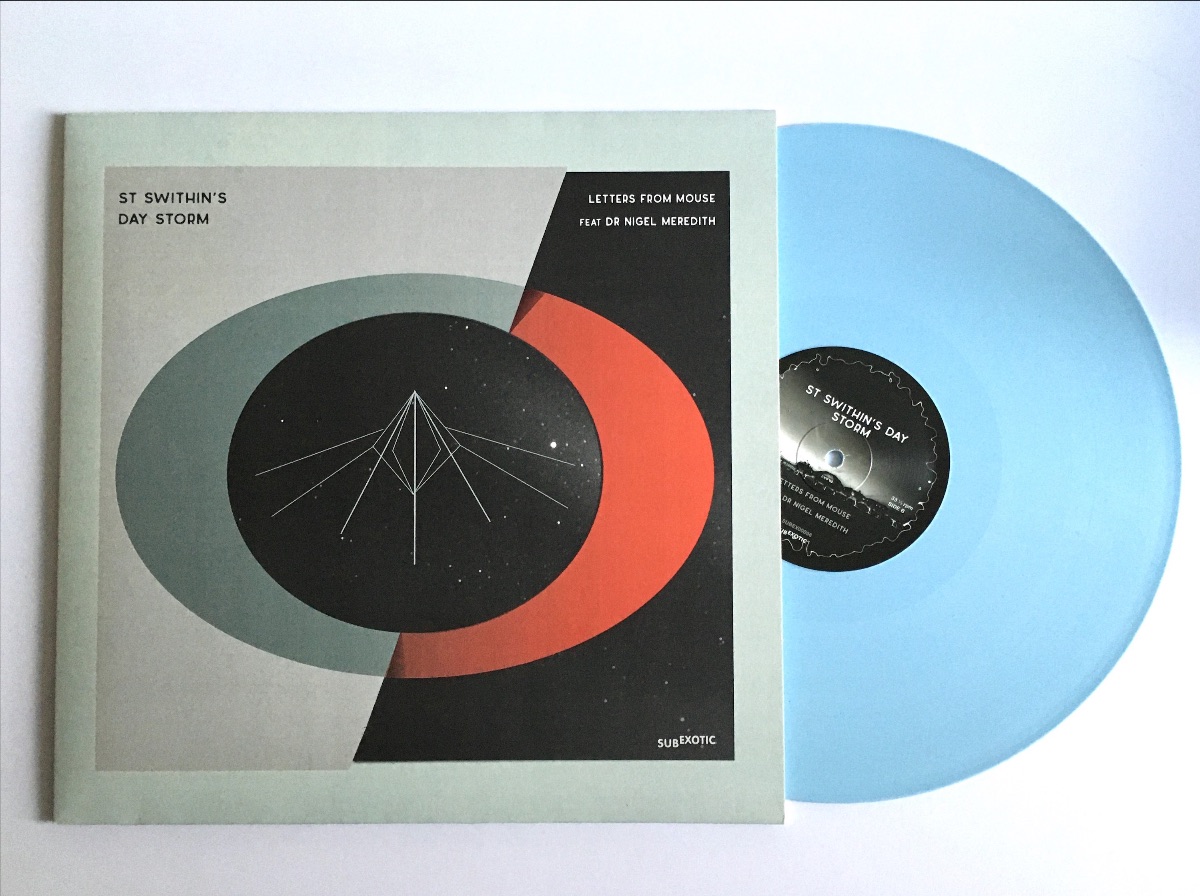
Music from St Swithin’s Day Storm has featured on Radio Dark Tunnel, The Dark Train (MA#46 and MA#49) on Warminster Community Radio and The Space is the Place Radio Show (26-01-23 and 02-02-23) on Cando FM.
The ‘sounds of space’ feature in a new sciart composition entitled P1anets by Steev, a technologist with a penchant for combining art and science in myriad ways, often uncovering hidden patterns or unlikely coincidences. Previously, he created “Symphony No.1 in C# minor“, an entire work based around the single idea of asynchronous timing. He lives in Cambridge, surrounded by too many books.
The sample sounds on this page were produced from radio waves detected by the Halley VLF receiver at Halley VI, Antarctica. It is a good location to record the ‘sounds of space’ as it is magnetically connected to the outer radiation belt where Extremely Low and Very Low Frequency signals are generated, and is electromagnetically “quiet” as it lies far from man-made sources.
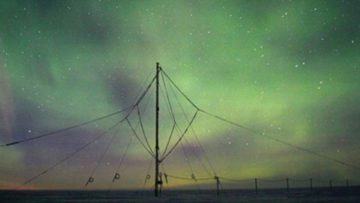
Surprise your friends with an out-of-this-world ringtone. Choose from this selection of eerie ‘sounds’, in mp3 format, recorded by the Halley VLF receiver:
1. Meredith, N. P., K. Cunio, D. Scarborough and A. D. Wynne, Music of the Spheres, Astronomy and Geophysics, 63, 1, https://doi.org/10.1093/astrogeo/atac013, 2022.
2. Lu, D., ‘Chirps’ in space: new album captures the sounds of black holes colliding, The Guardian, 24th June 2021.
3. Spencer, A., Hear the sounds of space weather as Cambridge artist turns British Antarctic Survey data into album, Cambridge Independent, 21st January 2021.
4. Meredith N.P., and A.D. Wynne, Sounds of space at Cambridge Festival of Ideas, Astronomy and Geophysics Forum, 5th November 2019.
5. Meredith, N. P., Turning the sounds of space into art, Astronomy and Geophysics, 60, 2, https://doi.org/10.1093/astrogeo/atz097, 2019.
6. Stone, M., Listen to the creepy noises picked up at a space weather station in Antarctica, Earther, 26th December 2018.
7. Hall, C., Elite’s new exploration system brings even more real-world science into the game, Polygon, 4th December 2018.
1. Listen to a specially curated session featuring music from our album In Aurora’s Garden on The Dark Train DDIX B.10011 on Warminster Community Radio, 17th June 2024.
2. Listen to Nigel Meredith, Kim Cunio and Diana Scarborough speaking to Ben Curdie on 2SER DRIVE in Sydney about our space music, 22nd April 2024.
3. Listen to a specially curated session featuring music from our album Sunconscious on The Dark Train MA#84 on Warminster Community Radio, 16th October 2023.
4. Listen to Nigel Meredith’s invited talk at the Aerobility Aurora 23 event, 18th February 2023.
5. Listen to Nigel Meredith’s invited talk in the session “Dialogues between space science and art” at the 44th COSPAR Scientific Assembly, 21st July 2022.
6. Listen to a specially curated ‘sounds of space’ session on The Dark Train MA#15 on Warminster Community Radio, 20th June 2022.
7. Listen to Nigel Meredith speaking to the Cambridge University Astronomical Society about the ‘sounds of space’, 8th February 2022.
8. Listen to Nigel Meredith talking to Claire McKenna about Celestial Incantations, on the Moncrieff Show, on Newstalk, 25th June 2021.
9. Listen to Nigel Meredith talking to Jon Culshaw in a section entitled “Polar Radio – Making Music with Mother Nature” as part of the Aerobility Armchair Aurora livestream, 13th March 2021. The piece starts at 2 hours 25 minutes.
10. Listen to Nigel Meredith and Kim Cunio talking about Aurora Musicalis with Hamish McDonald on the ABC Radio National Breakfast show, 7th May 2020.
11. Find out more about the ‘sounds of space’ and how they are used in Elite Dangerous, Elite Dangerous Live Broadcast, 7th November 2019.
12. Listen to Nigel Meredith talking about the ‘sounds of space’ with BBC Earth’s Emily Knight, BBC Earth Podcast “Looking Up”, 9th May, 2019. The ‘sounds of space’ are the second story in this episode and start around minute eight.
13. Listen to a larger selection of the Earth’s amazing natural radio emissions recorded by the Halley VLF Receiver, Elite:Dangerous Earthsounds, on SoundCloud, 26thDecember 2018.
Science Leader - IMP 1
BAS Science Strategy Executive Group, Space Weather and Atmosphere team, BAS Executive team
24 February, 2023
A new album inspired by the sounds of radio waves produced by a geomagnetic storm has been released. St Swithin’s Day Storm is a collaboration with Steven Anderson, known as …
2 December, 2022
A new album transporting listeners on a journey to the Sun and inspired by ‘sounds’ captured in space and on the ground shows the magic created when science and the …
21 June, 2021
Celestial Incantations – New album release from Sounds of Space Project New album Celestial Incantations is released today by the international Sounds of Space Project, comprising of Dr Nigel Meredith …
6 May, 2020
A new album with the unique ‘sounds of space’ recorded from Antarctica is released free today (6 May 2020). Aurora Musicalis contains the natural radio ‘sounds’ of our planet, recorded …
11 December, 2018
Amazing, natural, ‘sounds of space’, have been incorporated into the new exploration gameplay in Elite Dangerous
4 June, 2015
FREE event: ‘Discover Antarctica’ at British Geological Survey Open Day, Saturday 27 June, 10am-4pm Staff from British Antarctic Survey (BAS) will showcase its work at this year’s British Geological Survey …